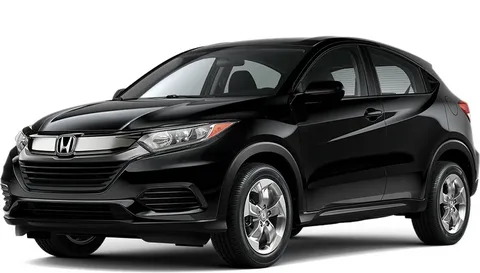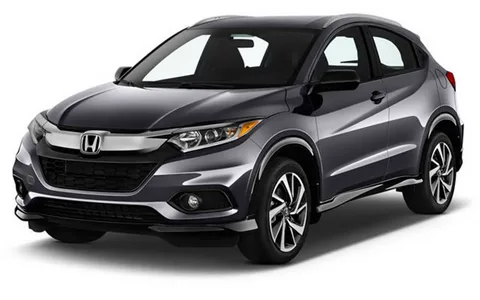Effective ventilation is crucial in sustainable building design. Heat Recovery Ventilation (HRV) systems are key in improving indoor air quality and reducing energy costs. By recycling heat energy from exhaust air, HRV systems minimize environmental impact. This guide will explore HRV price, including costs, sizing, features, and benefits, to help building owners and managers make informed decisions.
How Hrv Systems Work?
A quiet revolution is taking place inside a modern building’s walls. It’s a technological marvel quietly working behind the scenes to improve the air we breathe, reduce energy bills, and create a more comfortable living and working space. This is the world of Heat Recovery Ventilation (HRV) systems, and it’s a game-changer.
At its core, an HRV system is designed to harness the heat energy usually lost during the exchange of fresh and stale air. This is done using a heat exchanger, which captures the heat from the stale air and transfers it to the fresh air, warming or cooling it as needed. This efficient and sustainable process allows building owners to reduce their energy consumption and carbon footprint.
The resulting air is distributed throughout the building, providing constant, clean air. The stale air, meanwhile, is removed from the building and released outside. This continuous air exchange and heat recovery cycle makes HRV systems effective at improving indoor air quality and reducing energy consumption.
HRV System Cost And Pricing
The HRV system cost is crucial for any building owner or manager. While the initial investment in a heat recovery ventilation system may seem daunting, the long-term benefits and savings far outweigh the upfront costs. In this section, we’ll break down the typical costs associated with HRV systems and the various factors that can influence the final price. On average, the cost of an HRV system can range from $5,000 to $20,000 or more, depending on its size and complexity.
However, it’s important to note that these costs can vary significantly depending on a range of factors, including the size and layout of the building, the number of floors and rooms, the type and quality of insulation and construction materials used, and the climate and regional requirements of the building. For example, a small, one-story office building with a simple layout and moderate insulation requirements may require a relatively simple HRV system, costing around $5,000 to $10,000.
On the other hand, a large, multi-story commercial building with complex insulation requirements and high energy demands may require a more sophisticated HRV system, which could cost $20,000 or more. Building owners and managers should also consider the ongoing costs of maintenance and upkeep, which can include routine cleaning and filter replacements, as well as occasional repairs and replacements of system components. Compared to the long-term benefits of improved indoor air quality, reduced energy costs, enhanced comfort, and reduced noise pollution, the cost of an HRV system can be a wise investment for any building.
 Factors Affecting HRV-System Cost and Price
Factors Affecting HRV-System Cost and Price
Factors affecting HRV (Heat Recovery Ventilation) system cost and price can vary significantly based on several key considerations:
System Capacity and Size
Larger HRV systems designed to ventilate larger spaces will generally cost more due to increased material and installation requirements.
Technology and Features
Advanced features such as heat pumps, energy recovery systems, and intelligent controls can raise prices but often improve efficiency and effectiveness.
Installation Complexity
Installation costs can vary based on the complexity of ductwork, retrofitting requirements, and the need for specialized labor.
Brand and Quality
Established brands with a reputation for reliability and efficiency may command higher prices than lesser-known brands, reflecting perceived quality and warranty support.
Energy Efficiency Ratings
Higher efficiency ratings, such as those certified by ENERGY STAR, may initially cost more, but reduced energy consumption can result in long-term savings.
Heat Vent Sizing and Selection
Sizing and selection are crucial factors when selecting the right heat vent for your building. The correct size of your HRV system is vital to ensure that it can effectively handle your building’s ventilation needs while also providing maximum energy efficiency and minimizing costs. Over-sizing or under-sizing your HRV system can lead to reduced performance, increased energy consumption, and even system failure.
To determine the correct size HRV system for your building, you must consider several factors, including the size and layout, the number of floors and rooms, and the type of insulation and construction materials used. It would help if you also had to consider the climate and regional requirements, as well as the specific ventilation needs of your building. A professional HRV system designer or engineer can help you determine the correct size HRV system for your building by thoroughly analyzing your building’s ventilation needs.
They will use specialized software to simulate the airflow and heat recovery performance of different HRV system sizes and configurations. They will provide you with a customized solution that meets your specific needs. You also need to consider the type of HRV system that is best suited for your building. Many different types of HRV systems are available, including wall-mounted, ceiling-mounted, and floor-standing units, each with its own unique features and benefits.
Common Applications and Industries
HRV systems are not limited to a specific type of building or industry. Their benefits can be enjoyed across a wide range of sectors and applications. HRV systems have proven to be a valuable addition to many types of facilities, from residential and commercial buildings to hospitals, schools, and more. In the residential sector, HRV systems can provide a comfortable and healthy indoor environment while reducing energy bills and environmental impact. Homeowners can enjoy improved indoor air quality, reduced noise pollution, and a more sustainable living space.
HRV systems can help businesses reduce energy costs, improve employee productivity, and enhance the overall tenant experience in the commercial sector. Commercial buildings can become more attractive and desirable workplaces with improved indoor air quality and reduced noise pollution. HRV systems can be critical in maintaining a healthy and safe environment for patients and staff in the healthcare industry. Hospitals and healthcare facilities can benefit from improved indoor air quality, reduced noise pollution, and a more sustainable environment.
Features and Benefits of Heating Vents
Here’s a breakdown of the features and benefits of heating vents:
Efficient Heating Distribution
Heating-vents effectively distribute warm air throughout a space, ensuring even temperature regulation.
Temperature Control
They allow for precise control over room temperature, enhancing comfort and energy efficiency.
Versatility in Design
Heating-vents can complement different interior aesthetics in various sizes, styles, and materials.
Durability and Longevity
Constructed from durable materials like metal or high-quality plastics, heating-vents offer longevity and reliability.
Noise Reduction
Some vents are designed to minimize operational noise, ensuring a quieter environment.
Ease of Installation
They are typically easy to install and replace, facilitating quick upgrades or maintenance.
Improved Air Quality
Vents equipped with filters can improve indoor air quality by trapping dust, allergens, and debris.
Energy Efficiency
By efficiently distributing heated air, vents contribute to lower energy consumption and reduced heating costs over time.
HRV System Maintenance and Upkeep
Regular maintenance and upkeep are crucial to ensuring the optimal performance and longevity of your HRV system. By performing routine maintenance tasks, you can prevent costly repairs, reduce energy consumption, and maintain the highest indoor air quality levels. In this section, we’ll delve into the importance of HRV system maintenance and provide practical tips on how to keep your system running smoothly.
- One of the most critical aspects of HRV system maintenance is cleaning and replacing filters. Dirty filters can reduce airflow, increase energy consumption, and even lead to system failures. It’s essential to replace filters every 1-3 months, depending on your building’s usage and occupancy. Additionally, you should clean the system’s coils, fans, and other components to prevent dust and debris buildup.
- Another vital aspect of HRV system maintenance is inspecting and replacing worn-out components. Regularly inspect your system’s components, such as the heat exchanger, fan, and motors, and replace them as needed. This will help prevent system failures, reduce energy consumption, and maintain the overall performance of your HRV system.
- It’s also important to schedule annual maintenance checks with a certified HVAC technician. These checks can help identify potential issues before they become significant problems, ensuring your HRV system runs efficiently and effectively throughout the year.
Importance of Correct Heat Recovery Ventilator Sizing
Correctness of Heat Recovery Ventilator sizing ensures optimal energy efficiency and indoor air quality in residential and commercial buildings. HRVs play a vital role in modern construction by balancing the need for fresh air with energy conservation, especially in tightly sealed structures designed to minimize heat loss. Proper sizing ensures that the HRV can effectively exchange indoor and outdoor air without overworking or underperforming.
An oversized HRV may lead to excessive energy consumption and uncomfortable temperature fluctuations as it cycles air too quickly. Conversely, an undersized unit may fail to adequately ventilate spaces, leading to poor indoor air quality and potential health issues from stagnant air. Correct sizing considers building size, layout, occupancy levels, and climate factors. These variables influence the ventilation required to maintain a healthy indoor environment while minimizing energy losses.
By matching the HRV’s capacity to these specific conditions, building owners can achieve optimal energy savings and air quality enhancement performance. Proper HRV sizing aligns with sustainability goals by reducing energy consumption. It ensures the system operates efficiently, recovering heat from outgoing air streams to pre-conditioning fresh air. This process reduces the heating and cooling load on HVAC systems, lowering utility bills and environmental impact.
Conclusion
HRV systems have revolutionized ventilation and air quality in modern buildings. These systems offer a sustainable solution to improve indoor air quality, reduce energy costs, and enhance comfort while reducing noise pollution. They are essential for many buildings, especially in urban areas or with high occupancy rates. Despite the initial HRV price, investing in an HRV system brings long-term benefits such as improved health, reduced environmental footprint, and increased overall value of the building. Whether you’re upgrading an existing ventilation system or designing a new building, HRV systems are worth considering.
FAQs
Q: What is the average HRV system cost?
A: The average HRV system cost can vary greatly depending on factors such as building size, layout, and insulation. However, on average, a residential HRV system can range from $1,000 to $5,000, while a commercial HRV system can cost anywhere from $5,000 to $50,000 or more.
Q: How do I choose the right HRV system size for my building?
A: Choosing the right HRV system size is crucial to ensure optimal performance and efficiency. When selecting an HRV system, consider the following factors: building size, number of occupants, and insulation levels. It’s also essential to consult a professional HVAC expert to determine the correct size and specifications for your building.
Q: Can HRV systems be installed in older buildings?
A: Yes, HRV systems can be installed in older buildings, but it is crucial to assess the existing infrastructure and make any necessary upgrades before installation. This may include modifying ductwork, insulation, or other components to ensure a seamless integration.
| Related Business Listings |
| Contact Directory |
| Local Business Profiles |


